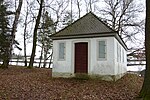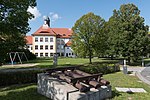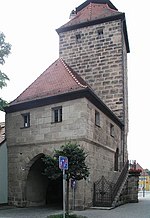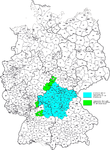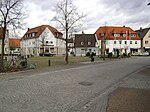Schloss Weißenstein
1718 establishments in the Holy Roman EmpireArt museums and galleries in GermanyBaroque architecture in BavariaBuildings and structures completed in 1718Buildings and structures in Bamberg (district) ... and 3 more
Historic house museums in GermanyMuseums in BavariaPalaces in Bavaria

Schloss Weißenstein is a Schloss or palatial residence in Pommersfelden, Bavaria, southern Germany. It was designed for Lothar Franz von Schönborn, Prince-Bishop of Bamberg and Archbishop of Mainz, to designs by Johann Dientzenhofer and Johann Lukas von Hildebrandt. Weißenstein, built as a private summer residence, remains in the Schönborn family. It is considered a masterwork of Baroque architecture.: 10
Excerpt from the Wikipedia article Schloss Weißenstein (License: CC BY-SA 3.0, Authors, Images).Schloss Weißenstein
Pfarrer-Schonath-Straße,
Geographical coordinates (GPS) Address External links Nearby Places Show on map
Geographical coordinates (GPS)
| Latitude | Longitude |
|---|---|
| N 49.763 ° | E 10.821 ° |
Address
Schloss Weißenstein
Pfarrer-Schonath-Straße
96178
Bavaria, Germany
Open on Google Maps

